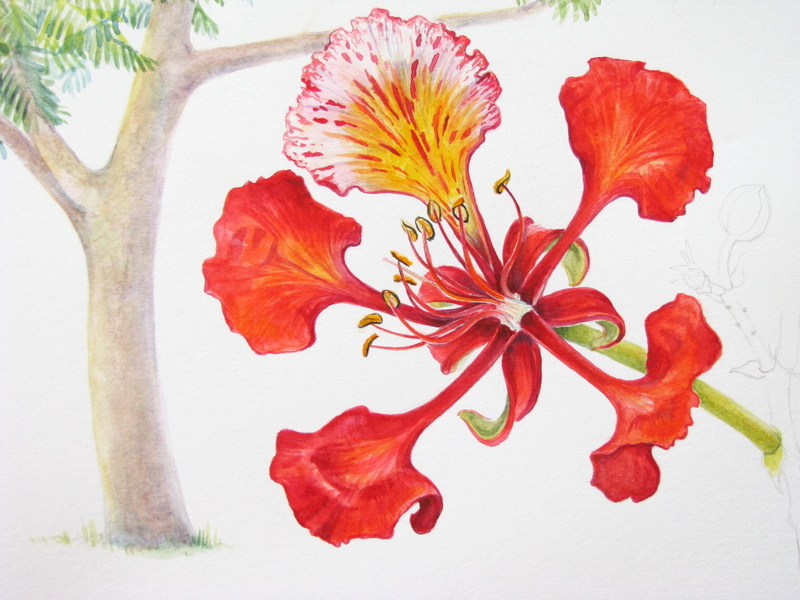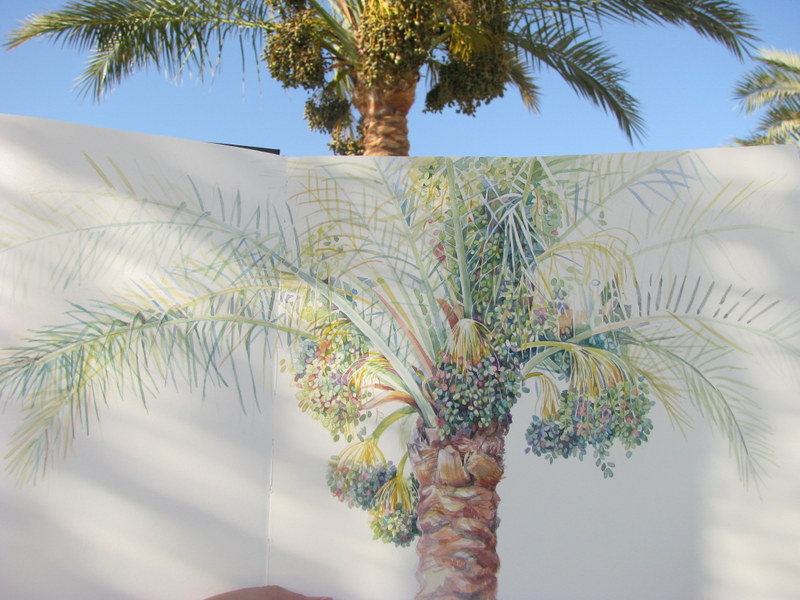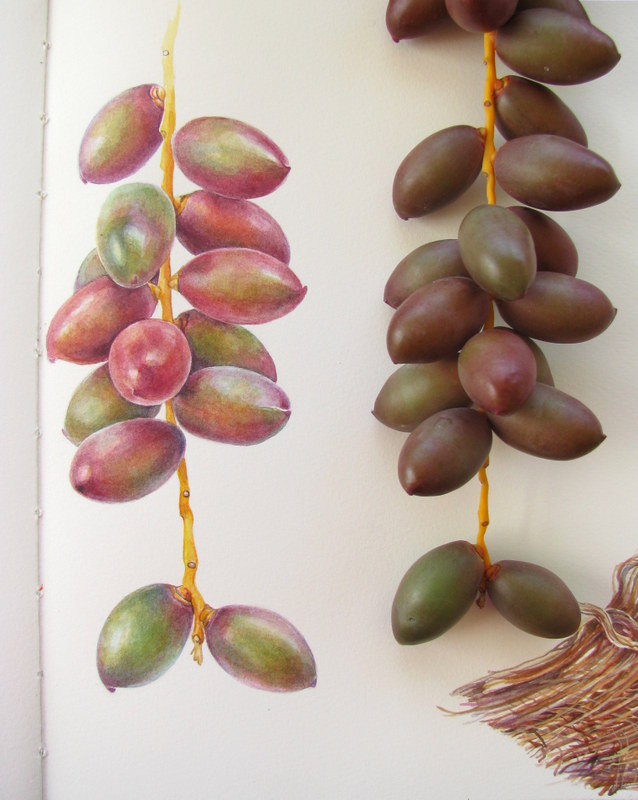 |
| Marianne North's Doum and Date palms on the Nile above Phillae |
I’m very excited about the SBA’s exhibition, “Medicinal and Poisonous Plants”, in Frankfurt this October. The theme is one that really appeals to me, and has given me the perfect excuse to paint and research some medicinal plants that I have been wanting to paint for ages.
Egypt has long been famous for it’s herbs and spices, and in
every Souk (market), you can find a spice shop- a wonderful Aladdin’s cave of spices,
medicinal herbs, aromatic incenses, fragrant essential oils, all stored in
large colourful baskets. Buying your wares involves a fair amount of haggling
and friendly banter, along with the obligatory cup or two of fresh mint tea. I
left with a bag full of exotic treasures.
First onto the drawing board is the very peculiar fruit of
the Doum palm, Hyphaene thebaica, also known as the gingerbread tree. The tree
is not as common as it once was, in fact, I have only seen in growing in the
south of Egypt, but in ancient Egypt, every Egyptian of standing would have had
these trees growing in his garden.
 |
| Doum tree painting on the tomb walls of Sennedjem http://www.osirisnet.net/tombes/artisans/sennedjem1/e_sennedjem1_01.htm |
The Doum Palm was
considered a sacred tree, and symbolised of male strength and virility. In fact,
the fruit of this tree was of such importance that eight baskets full of dried doum fruit were discovered in Tutankhamum’s tomb, left to provide him with
sustenance in the afterlife.
I am also painting the dried fruit. It’s rock hard with a
shiny sienna-coloured appearance, and even though it’s dry, it smells delicious. Pliny describes it in his Natural History Book-
“... the wood of the cucus is held in very high esteem. It
is similar in nature to the palm, as its leaves are similarly used for the
purposes of texture: it differs from it, however, in spreading out its arms in
large branches. The fruit, which is of a size large enough to fill the hand, is
of a tawny colour, and recommends itself by its juice, which is a mixture of
sweet and rough. The seed in the inside is large and of remarkable hardness,
and turners use it for making curtain rings. The kernel is sweet, while fresh;
but when dried it becomes hard to a most remarkable degree, so much so, that it
can only be eaten after being soaked in water for several days. The wood is
beautifully mottled with circling veins, for which reason it is particularly
esteemed among the Persians.”
I never knew that the ancient Egyptians used curtain rings!
 |
| I paint little squares of all the possible pigments first, to help me select the right colours |
Despite being dry and hard, you can eat it. The only way
that I can describe it is like biting into MDF to find it dissolving in your
mouth and tasting a bit like the honeycomb centre of Maltesers. I haven’t tried
soaking it. It’s usually made into a very sweet drink. The ancient Egyptians
were correct to appreciate it’s health-giving properties- studies conducted by
Egypt's Mansoura University found that it significantly lowered high blood pressure
and great reduced the risk of cardiovascular disease. In fact, it’s an
all-round “super-fruit” packed with many nutritious and medicinal properties.
It is extremely hard and took me a long time to scrape the
doum nut clean for the dissection. The “nut” is also rock hard, and has been
described as “vegetable ivory”. Apparently there once was a factory set up over here
to make buttons from it, in the days before plastic took over the world.
 |
| Building up the layers of colour slowly (not finished) |
Painting here has proved a bit of a challenge, mainly
because it’s so dry and hot. This year I brought a small bottle of ox gall with
me, and although it doesn’t extend the drying time of the paint, it certainly
helps improve the spreading of the washes. In between layers of paint, I’m
having to pull a damp brush over the whole surface just to soften the edges of
the paint. My new Rosemary flats are perfect for this.
I painted a few practice doum fruit, and then tried out a
Carob seed pod, Ceratonia siliqua. I’ve often seen these pods but was put off
by the rather pungent smell. However having read about all the amazing health
benefits, and the fact that it’s being used more and more as an alternative to
chocolate, I decided to try some. It’s delicious. The pods are quite edible dry
and nicely chewy, but it’s more usually made into a really refreshing drink.
Again, it’s one of those "super-foods", having analgesic, anti-allergic,
antibacterial, antioxidant, antiviral and antiseptic properties. The seeds are interesting
too. A resinous gum can be extracted from them which, in ancient Egyptian times
was used to bind mummies. Nowadays this extract is used as a thickening agent,
emulsifier and stabilizer in beverages, candy, desserts, ice cream, salad
dressings, cheeses, jelly, baked goods and other products. The seeds were also
used as a measurement of gold during Roman times … twenty four seeds being
equal to the weight of one gold coin, which eventually gave us the phrase “24
carat”.
I added a few more practice pieces to my study page- karkade
(the dried calyces of hibiscus flowers Hibiscus sabdariffa ) which are used to
make a refreshing drink)
Carob seeds, Cardamom pods (Elettaria cardamomum) and Star Anise (Illicium verum)
Senna pods (Senna alexandrina) and dried Desert-gourd (Citrullus colocynthis)
I’m going to enjoy painting this piece- the colours, the textures
and the smells. My practice page is almost done, now it's time to start on the real thing.




























